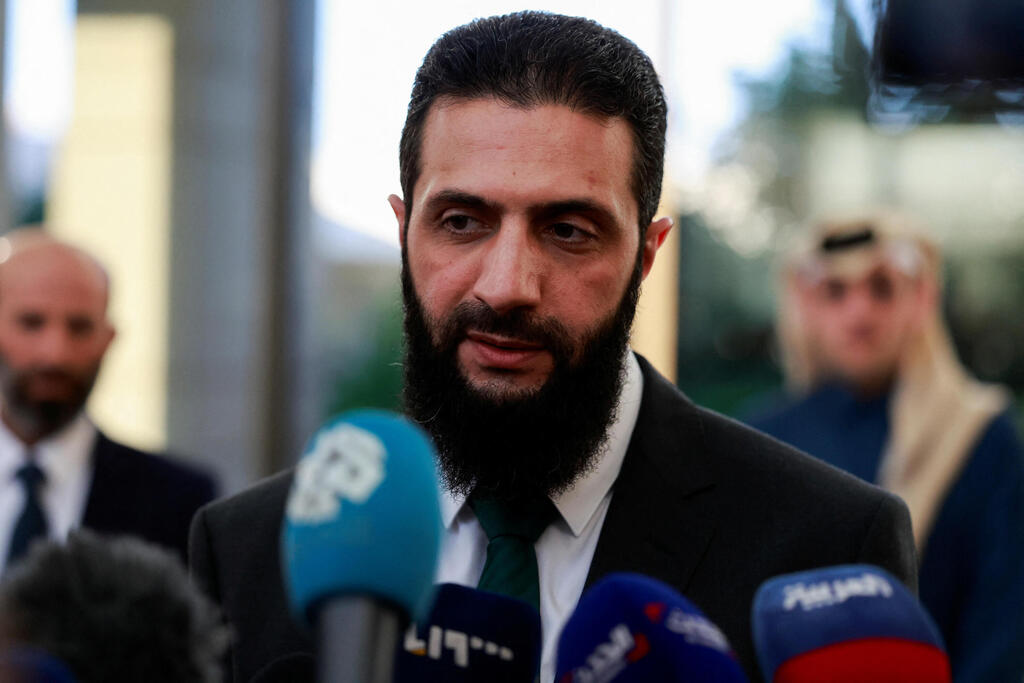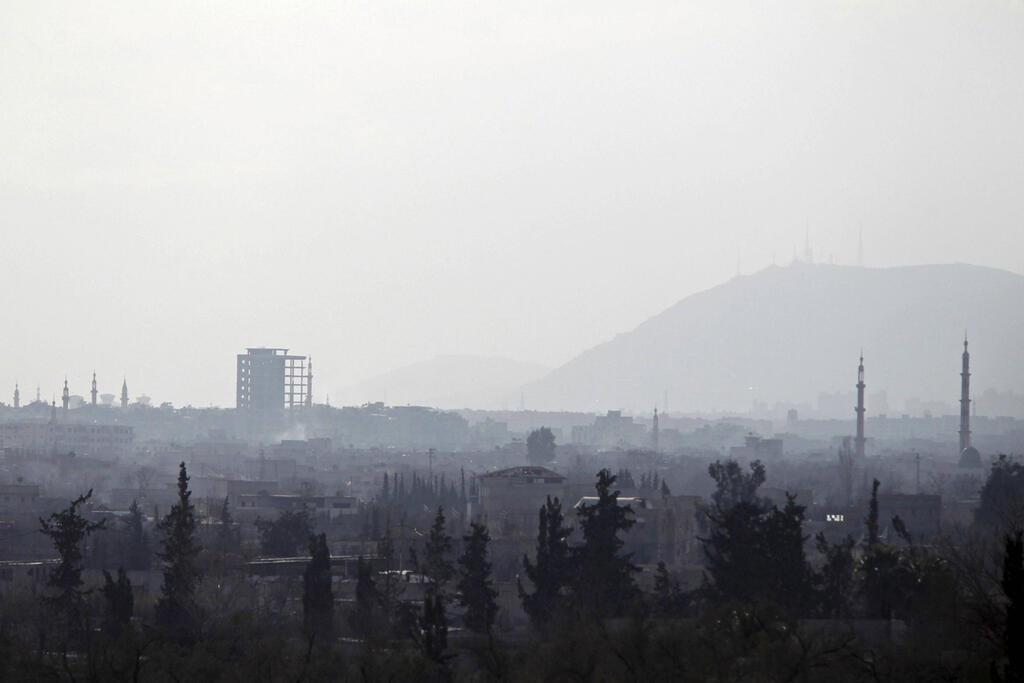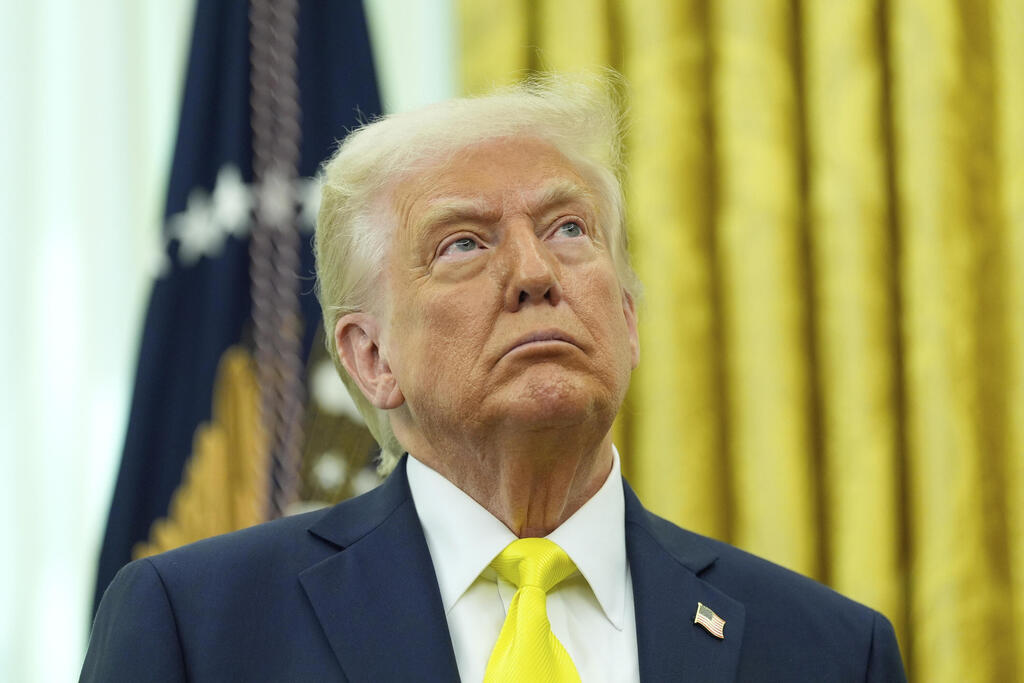Getting your Trinity Audio player ready...
In the first visit of its kind since the fall of Syrian President Bashar Assad in December, an unofficial delegation from the United States Congress visited Syria this weekend. The move signals a potential new phase in U.S.-Syria relations and a reassessment of Syria’s regional role.
The visit comes amid rapid regional and international developments—foremost among them the conflict between the U.S. and Iran—and follows a previous high-level diplomatic mission by senior U.S. State Department officials late last year.
4 View gallery


Syrian President Ahmad al-Sharaa meets with a US delegation in Damascus on April 20, 2025
(Courtesy of Syrian Presidency)
Observers believe Washington is beginning to take a more pragmatic approach toward the changes in Syria, particularly following the emergence of a new political leadership headed by President Ahmad al-Sharaa, who has adopted a foreign policy rooted in openness and mutual respect. Even so, a debate is ongoing within U.S. political circles regarding al-Sharaa’s past association with Islamist groups, including al-Qaida.
The congressional delegation, which included Reps. Cory Mills and Marlin Stutzman, was accompanied by members of the Syrian American Alliance for Peace and Prosperity (SAAPP). The visit featured field tours of heavily damaged areas from the war—most notably Jobar, a district northeast of Damascus—along with scheduled visits to Sednaya Prison and meetings with religious and community leaders.
According to the Syrian presidency, al-Sharaa held talks in Damascus with Mills in the presence of Foreign Minister Asaad al-Shaibani.
A source in the Syrian presidency said that the session between al-Sharaa and Mills lasted about an hour and a half and mainly touched on two issues: the economic sanctions imposed on Syria and Iranian influence in the country.
Al-Sharaa hopes to persuade the United States to lift the sanctions imposed on Syria, while the U.S. seeks to ensure Syria’s commitment to American conditions before taking any steps in that direction.
The high-level source said that the meeting was characterized by “both openness and caution.” That may reflect a desire on the part of the U.S. to open more effective communication channels with the new regime—without this necessarily implying a swift or comprehensive normalization.
Yet while the congressional visit may not represent an official restoration of relations, it strongly indicates that Washington is reevaluating its approach to Syria, stepping away from the isolationist policies that defined the war years.
The delegation follows a landmark visit in December by senior U.S. State Department officials, including Barbara Leaf, assistant secretary of state for Near Eastern affairs. That trip marked the first American diplomatic presence in Syria in over a decade and included a meeting with al-Sharaa, just weeks after the previous regime collapsed.
A member of SAAPP emphasized the importance of the timing of the congressional visit. The visit aligns with broader efforts to reintegrate Syria into the Arab League and coincides with growing debates within the United States about the effectiveness and humanitarian impact of sanctions on Syria.
Majd Abbar, another member of SAAPP, said that the coalition is working diligently to ease sanctions on Syria and alleviate their effects on the Syrian people. He noted that the delegation aims to assess firsthand the humanitarian consequences of U.S. measures on daily life.
The visit to Jobar—one of Damascus’s most devastated neighborhoods—revealed, in the words of Rep. Stutzman, “a haunting picture.” He recounted seeing a child’s drawing on a crumbling wall: “We thought about the children who lost their homes. It was heartbreaking, yet I also feel hopeful.”
Although no official announcements were made regarding U.S. aid, sources said that the nature and timing of the visit could pave the way for a phased or partial lifting of sanctions, especially those impeding humanitarian relief and medical supplies.
During the tour of Jobar, Rep. Mills told the press that lifting sanctions on Syria would “require significant steps,” but affirmed that “Washington wants to see a stable Syria with a democratically elected government that represents all Syrians.”
Get the Ynetnews app on your smartphone: Google Play: https://bit.ly/4eJ37pE | Apple App Store: https://bit.ly/3ZL7iNv
Mills also addressed the possibility of a future meeting between President Donald Trump and al-Sharaa during Trump’s anticipated visit to the Middle East. He noted that Trump is known for taking bold diplomatic steps when he sees strategic value.
Analysts agree that such a meeting—if it materializes—could be a major turning point in U.S.-Syrian relations, especially if it is accompanied by concrete steps toward political resolution and regional cooperation with Syria as a key player.
Rep. Stutzman also expressed optimism about Syria’s future, saying he saw in Syria “an opportunity for a new relationship with a government that could be friendly to the West and the region.”
“What I saw was heartbreaking, but the future holds promise, especially with both political and public will for reconstruction,” he told Germany’s Deutsche Presse-Agentur news agency.
The delegation also visited the Convent of Saint Thecla during Easter celebrations—a symbolic nod to Syria’s religious and cultural diversity, and a reminder of the resilience of Syria’s social fabric despite the ravages of war.
Since al-Sharaa assumed office, Syria has pursued a foreign policy distinct from the previous era—one that emphasizes engagement with all international actors and reclaims Syria’s geopolitical relevance as a moderate regional player. Damascus has reiterated its commitment to international legitimacy, respect for state sovereignty, and nonintervention in neighboring countries. Analysts see these as genuine shifts in Syria’s political doctrine and essential signals to the broader international community.
The U.S. visit to Damascus may be only the first step in a long and complex process, but it undeniably carries strategic significance. It reflects a potential shift in Washington’s perception of Syria, particularly with a more open and moderate government now in place.
As Damascus repositions itself regionally and internationally, a new chapter may be unfolding—one that moves beyond years of war and intervention, toward a framework of cooperation, stability, and reconstruction.




